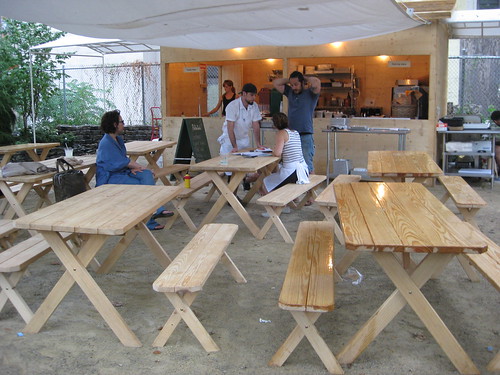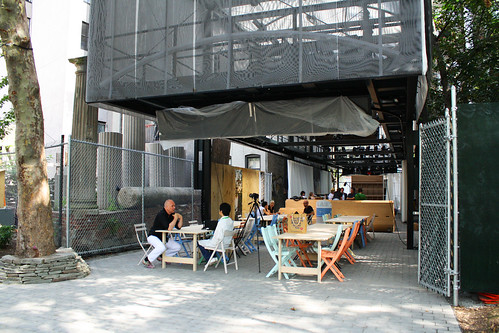Yesterday, two downtown residents were surprised to be turned away at the BMW Guggenheim Lab, the self-described “part urban think tank, part community center and public gathering space.” Following the first story about a woman and her dog, here’s the second— about a man and his stomach.
Yesterday’s launch of the cafe at the BMW Guggenheim Lab was a wash-out, but not because of the rain.
The cafe is operated by Roberta’s, a Brooklyn-based restaurant with a dizzying buzz factor. Opened as a casual wood-fired pizza joint in a former garage in a bleak, industrial corner of Bushwick, Roberta’s has steadily built a reputation not only for more ambitious food (think tripe and sweetbreads) but for a locavore ethic including herbs grown on the roof, home-baked bread and a Heritage Radio studio in the backyard. A collaboration between Roberta’s and a project to promote “innovative ideas for urban life” must have seemed a no-brainer.
So why did Roberta’s fans find themselves locked out of the compound last night, peering through the railings in the driving rain? The answer given by a door-tender around 6pm was that the screening of “Blank City” in an adjacent tent was sold out. “But we don’t want to go to the screening,” people cried. “We want to eat at the cafe.” Read more…





